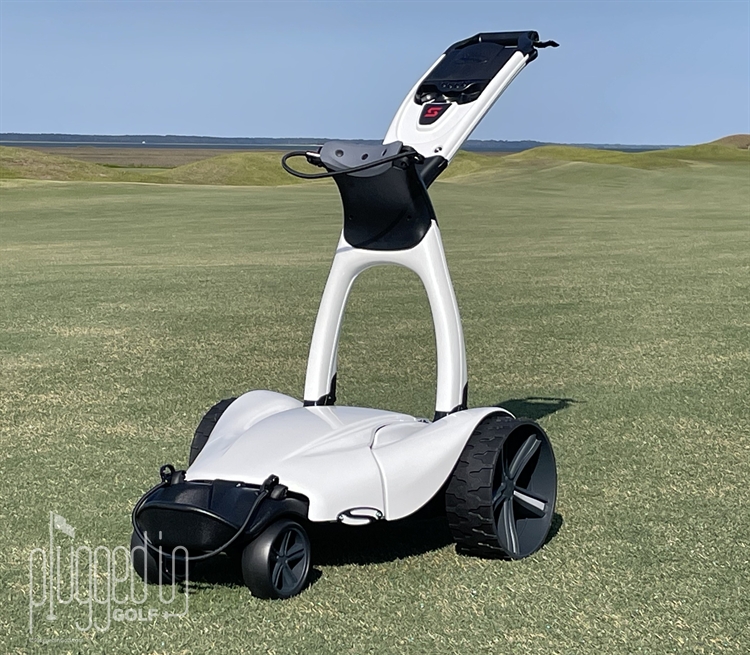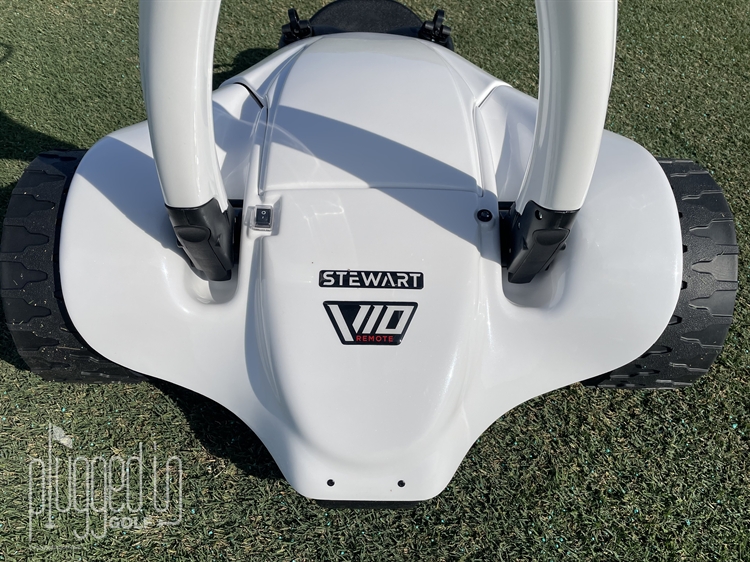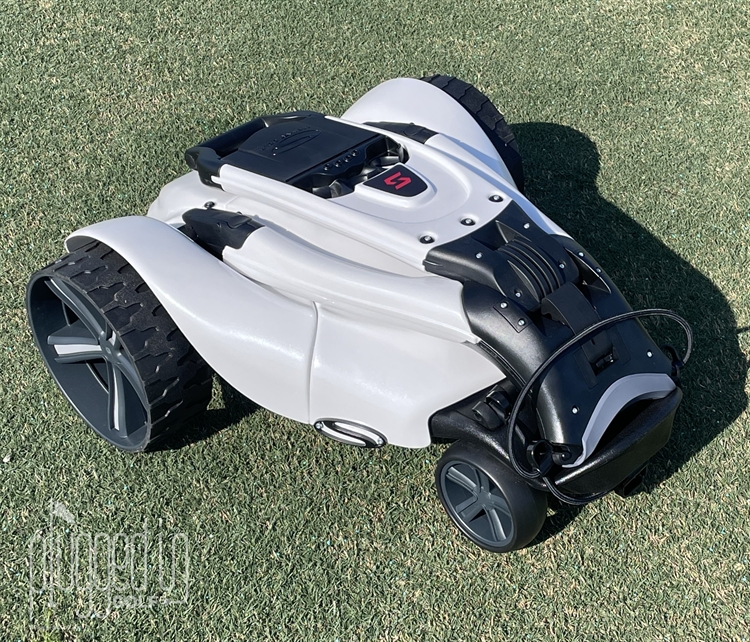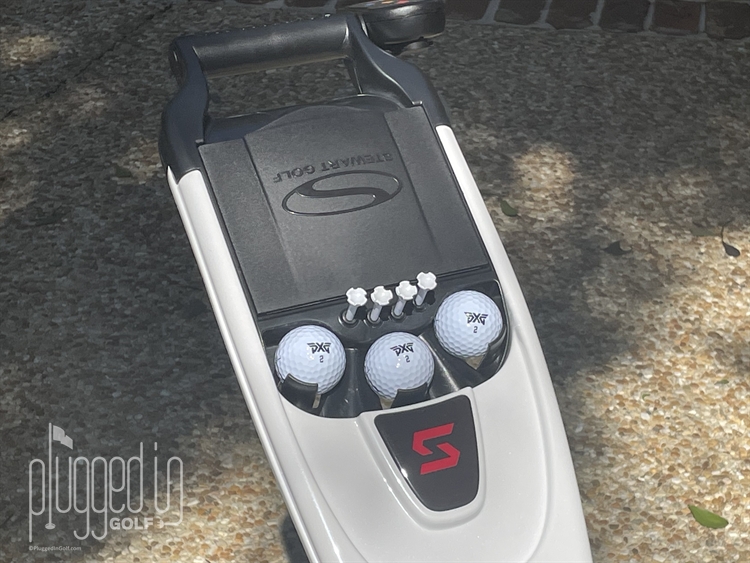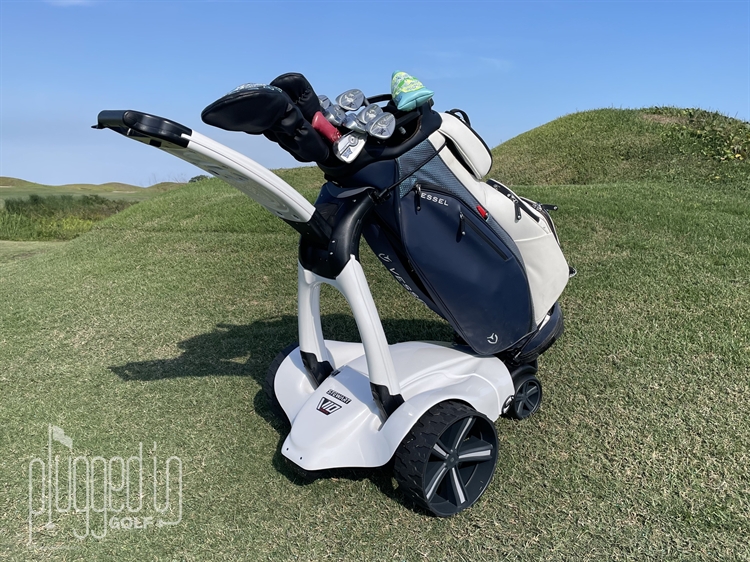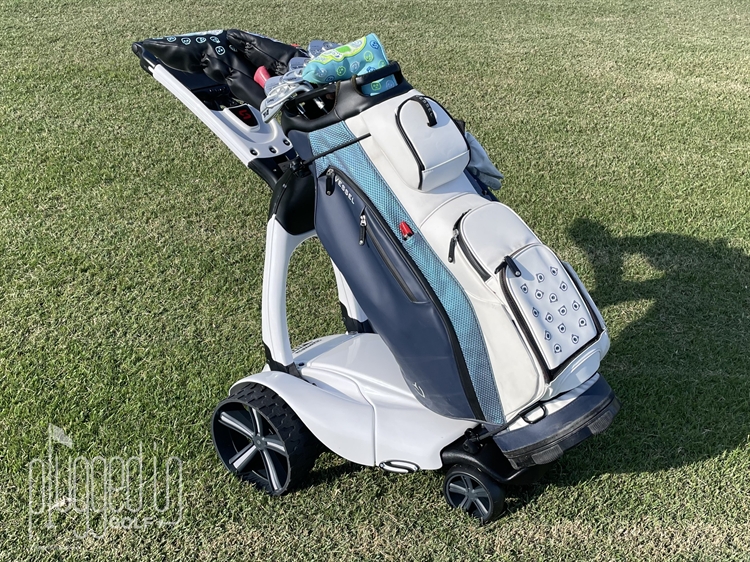50 Words or Less
The Stewart Golf V10 Remote electric cart is responsive and adaptive, easily navigating challenging conditions on the golf course. Sleek looks, plus simple to fold and unfold.
Introduction
Fellow golfers, I think we dodged a bullet – the electric push cart. Not the actual motorized cart – that’s genius – but the name. Quite simply, if we don’t push it by design, why have the word push in the name? It appears from my research that most companies in the space have converted to other names like electric caddies, electric trolleys, or, as Stewart Golf categorizes them, electric carts. I think with enough diligence from golf writers and real golfers, we can nip this problem before we’re in an as awkward a situation as forever referring to clubs made out of metal as woods.
Setup & Ease of Use
The Stewart Golf V10 Remote came fully assembled in one fairly substantial box. Inside the box I found the folded V10 Remote, handset, handset cover, battery charger, handset charger, and owner’s manual.
Unfolding was simple – lift the black handle until the two handle sections snap into place. The main lithium battery and electronics system reside under the cover, which lifted off by flexing the large “S” clips outwards. The battery comes in its own neoprene case complete with lift handles for charging remotely.

With both the main battery and handset, charged I was ready to get the Stewart Golf V10 Remote underway. Stewart states that the V10 Remote is “optimised for use with a cart or tour style bag weighting 31 lbs” so I grabbed my fully loaded Vessel Lux Cart [review HERE] bag. Placement was straightforward, but I had to give the bungees strong tugs to make it around my bag.
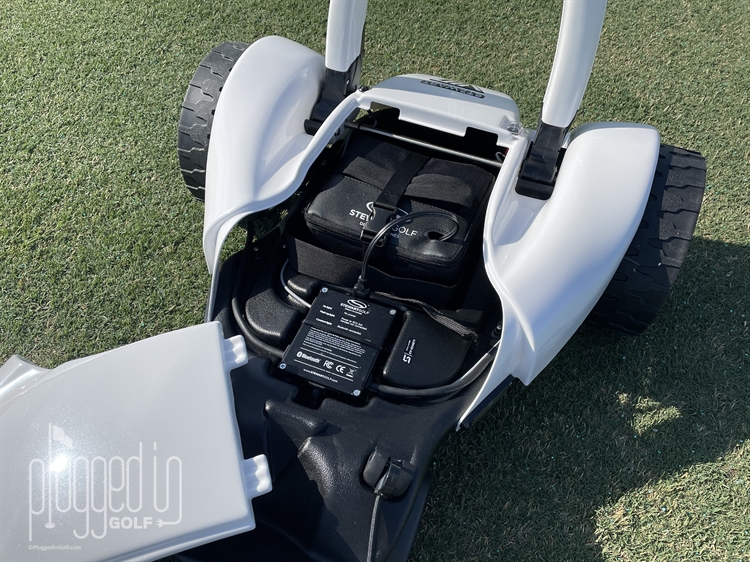
A simple on/off switch on near the base of the handle turned the unit on and a blue – Bluetooth – light flashed on the opposite side. Pushing the Bluetooth button on the handset synced the handset with the cart, and I was off and running.
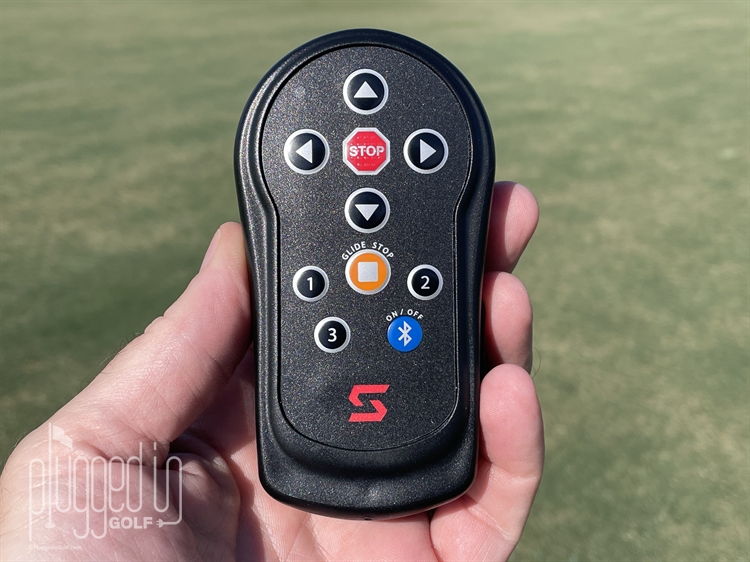
Operation of the Stewart Golf V10 Remote was very intuitive. It’s definitely worth reading the owner’s manual, but the buttons do exactly what you expect. Up arrow gets the V10 Remote moving forward and makes it speed up. The down arrow is for slowing down, or if stopped – reverse. And of course, left and right arrows are for left and right turns. I really liked the GLIDE STOP button to avoid the instant and occasionally jarring stop of the STOP button. The 1, 2, and 3 buttons are cruise control speeds – more on those later.
Storage & Accessories
As for storage, the Stewart Golf V10 Remote has a scorecard compartment and built in holders for 3 golf balls and 4 tees. Interestingly, I tried a variety of wooden tees and none of them fit – just the plastic ones I had. Stewart designers kept things simple – there aren’t any accessories to add. And I’m ok with that. I prefer to utilize my bag like I’m carrying even when using an electric or push cart. Plus, I suspect accessories might impact how compactly the V10 Remote folds.
On-Course Performance
Before I get to the on-course performance, let me mention how easy the Stewart Golf V10 Remote is to transport. Stewart created a lifting point under the front bag support that you use in conjunction with the rear stabilizer to lift and carry the unit. With the V10 Remote weighing in at just under 38 pounds, having dedicated lift points is important. Also, the white, five-layer Senosan composite body panels are too flexible for lifting, which Stewart notes “could cause unintended damage that will not be covered under warranty.”
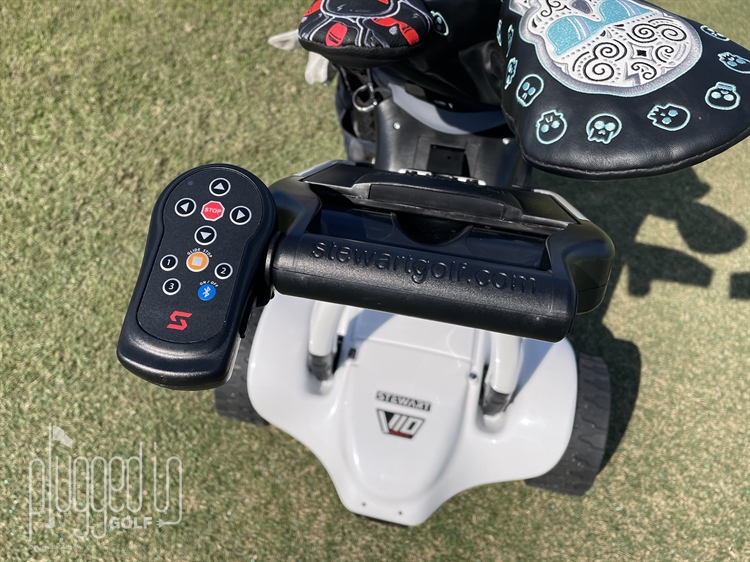
I was pleased with how well the Stewart Golf V10 Remote maneuvered on the golf course. A tap of the left or right button offered slight course alteration, while holding said button got the trolley to a full turn in a hurry. I did have to be mindful of speed when turning, but overall I felt in control. And when in doubt the STOP button was instantaneous.

I found the three cruise control speeds helpful – especially for longer walks after a tee shot. 1 was slow, 2 had a little pep, and 3 moved about as fast as I could walk. The handheld can also be used to program the buttons for speeds of your choosing.
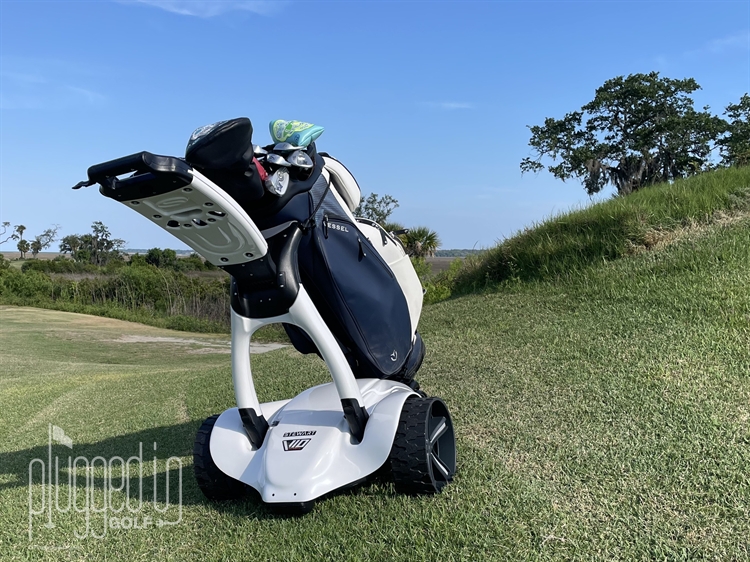
The courses I typically play are relatively flat, but several holes have some significant mounding and the Stewart Golf V10 Remote performed admirably. Testing the V10 on a couple of steep slopes, the front wheels came off the ground but the rear stabilizer did its job and kept the trolley from tipping. I did encounter a bit of backwards slippage when I stopped on the slopes, but that’s a condition I’m not likely to engage in during normal usage. Active Terrain Control (ATC) provides consistent speeds on slopes, which was readily apparent – and appreciated – on downhills where I’ve witnessed other units speeding up.
Conclusion
Overall, the Stewart Golf V10 Remote electric cart checks a lot of boxes. Folded or in action, the V10 Remote has a clean, sleek look. The trolley also comes in a metallic silver for those not keen on the Star Wars reminiscent pearlescent white. The V10 Remote was responsive to my commands and course conditions – not surprising when I learned the Cortex microchip conducts environmental assessments 1000 times per second.
I recharged after each round, but the lithium battery is listed for 36 holes. Retailing for $1749, the V10 Remote comes in well under the top end $3249 Stewart Golf Q Follow [review HERE]. If you’re looking for a fun to use, all-around solid performing electric cart, check out the Stewart Golf V10 Remote.

